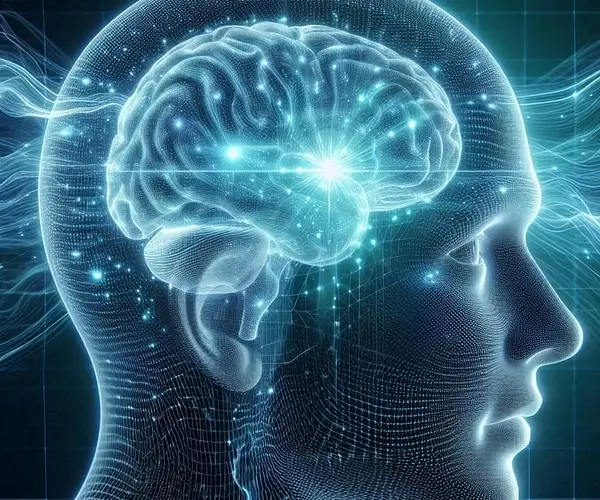When people think of PTSD, flashbacks, anxiety, and hypervigilance are usually the first things that come to mind. Not migraines. And while headaches aren’t a textbook sign of the disorder, there’s a strong link between PTSD and migraine. Mounting evidence shows people with PTSD are far more likely to deal with migraine than those who don’t. In this article, we’ll break down the research connecting migraine and PTSD and offer tips for how to manage both conditions.
What is Post Traumatic Stress Disorder (PTSD)?
PTSD is a disorder that occurs as a response to a traumatic situation. While trauma comes in all shapes and forms, the most common events to trigger PTSD include:
- Military combat
- Natural disasters
- Serious accidents
- Childhood or domestic abuse
- Physical or sexual assault
- Death of a loved one
- Serious injuries or health conditions

That said, only 1 in 3 people who go through severe trauma develop PTSD.1 No one knows why some develop the disorder, while others don’t.
Genetics, particularly a family history of mental health problems, likely plays a role. Yet lack of social support may also contribute to PTSD.
While the disorder is commonly associated with war veterans, anyone at any age can develop PTSD.
PTSD symptoms
Typically, symptoms arise within three months after being exposed to a traumatic event. But in some cases, symptoms may not emerge until years later.
Symptoms of PTSD include:
- Flashbacks, nightmares, or intrusive thoughts reliving the traumatic event
- Avoiding places, objects, or situations that may trigger distressing memories
- Feeling guarded, on edge, or easily startled
- Having irritable or angry outbursts
- Distorted thoughts about oneself
- Feelings of guilt, shame, or inability to feel positive emotions
- Reckless or destructive behavior
- Trouble falling or staying asleep
Due to the nature of PTSD, it’s no surprise that depression and anxiety are common comorbidities. Yet, PTSD can impact your physical health as well. Patients with PTSD face a greater risk of arthritis, heart problems, and digestive disorders, such as GERD.2 But pain often goes hand in hand with PTSD as well. For example, in one study of people with chronic low back pain, 51% also had PTSD symptoms.3 Headaches are also a common complaint in those with PTSD.4
The Relationship Between PTSD and Migraine
There is an undeniable link between PTSD and migraine. It’s estimated that roughly 8% of the population has PTSD. Yet the frequency of PTSD is much greater in those with migraine.
One study from the journal Headache found that 22.4% of people with episodic migraine had symptoms of PTSD.5 The results with chronic migraine were even more dramatic, with 30.3% of patients having signs of PTSD.
Another study examined the prevalence of PTSD among patients with tension headaches or chronic migraine. Out of 60 healthy control patients, five had PTSD (8%).6 Compare that to 40% of migraine patients and 13.3% of patients with tension headaches.
What’s more, childhood trauma and migraines often go hand in hand. Research shows migraine is more common in people with a history of emotional, physical, or sexual abuse than in the general population.7
Clearly, there’s a bidirectional link between the two conditions. But the mechanisms connecting the two aren’t entirely understood.
Does PTSD Cause Migraine?
For now, it’s unclear. One study found that 69% of episodic migraine patients had PTSD symptoms before the onset of their migraines.8 This suggests PTSD may trigger migraine, yet further research is needed to understand the link. About 80% of people with migraine report stress as a common trigger.9 And since PTSD involves living in a state of hyperarousal, the connection makes sense.
PTSD can cause your nervous system to stay stuck in ‘fight or flight’ mode. Staying in the stress zone for too long may cause abnormal activity of the trigeminal nerve, which is linked with migraine10 Stress also creates chronic inflammation, which may alter pain perception. Yet migraine may trigger PTSD symptoms as well. Living with migraine presents plenty of stressors. Migraine episodes can take a toll on work, relationships, and social life. These challenges may exacerbate symptoms of PTSD, creating a vicious cycle.
Managing PTSD with Migraine
Both PTSD and migraine are complex conditions. So treatment involves a comprehensive approach. Therapy, lifestyle changes, and medications are typically the recommended treatments.
Cognitive behavioral therapy is shown to be particularly helpful for PTSD patients with migraine. CBT works to shift dysfunctional thought patterns that may be contributing to stress and anxiety. CBT can also help you learn coping strategies for managing both conditions.
Shifting lifestyle habits can also help ease symptoms of both disorders. Meditation, mindfulness, and breathing exercises can all help calm the nervous system and ease stress.
Antidepressant medications such as selective serotonin reuptake inhibitors are often prescribed for PTSD patients as well. These meds may help lessen the severity of symptoms. Yet, these drugs often come with a long list of side effects.
Luckily, there are also natural options for calming an overactive stress response. Nutritional support can help address any underlying imbalances that may stir up anxiety or migraine. We carry two formulas that may offer relief:
Calm and Clever includes herbs and nutrients that reduce cortisol, helping to ease anxiety and lower the stress response.
Migrelief contains a triple shot of nutritional support for migraine sufferers, with magnesium, riboflavin, and Puracol® feverfew. For fast-acting neurological comfort for both migraine or headache sufferers, MigreLief-NOW (rescue formula) can make a big difference. MigreLief has been recommended by neurologists and headache specialists for over 25 years.
Akeso Health Sciences offers a 20% discount to all military personnel year-round. Click here to claim your discount code.
Takeaways
The link between PTSD and migraine is clear. Migraine is much more common in people with PTSD – and vice versa. Both disorders involve an overactive stress response. But the mechanisms behind the connection are unknown for now.
While both conditions are complex, coping strategies may help manage symptoms. Relaxation techniques, therapy, and nutritional support can help ease stress and anxiety, which may offer symptom relief.


